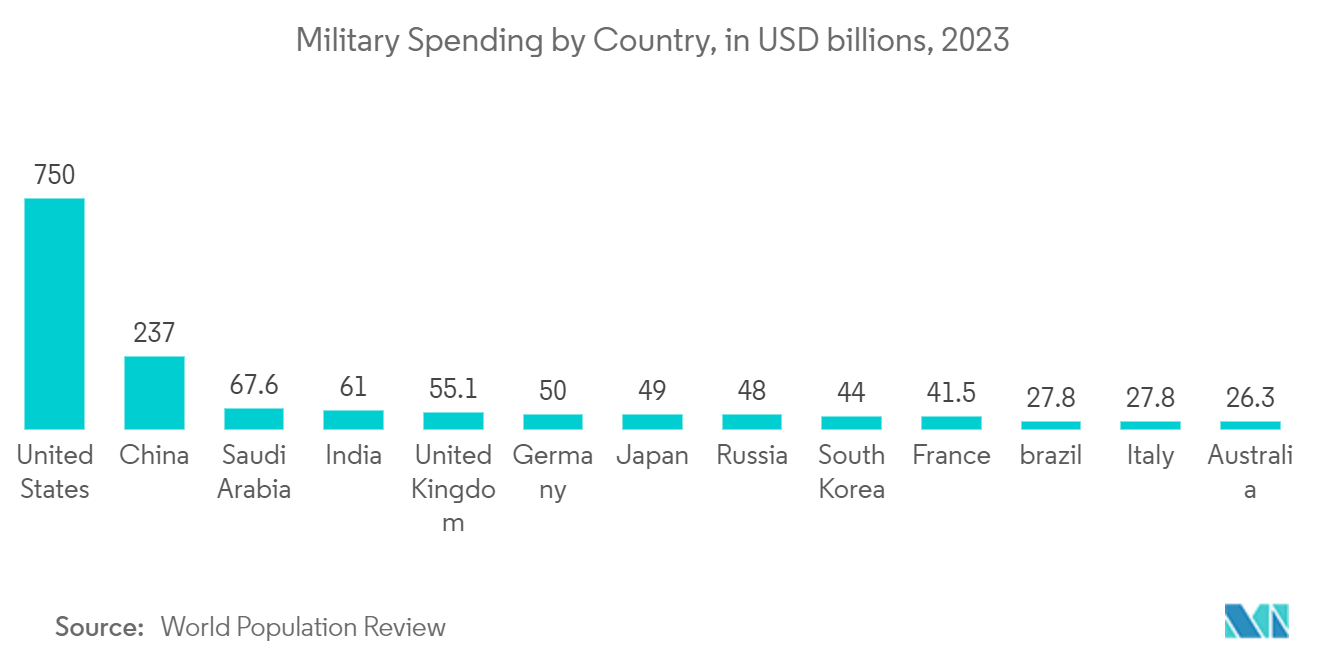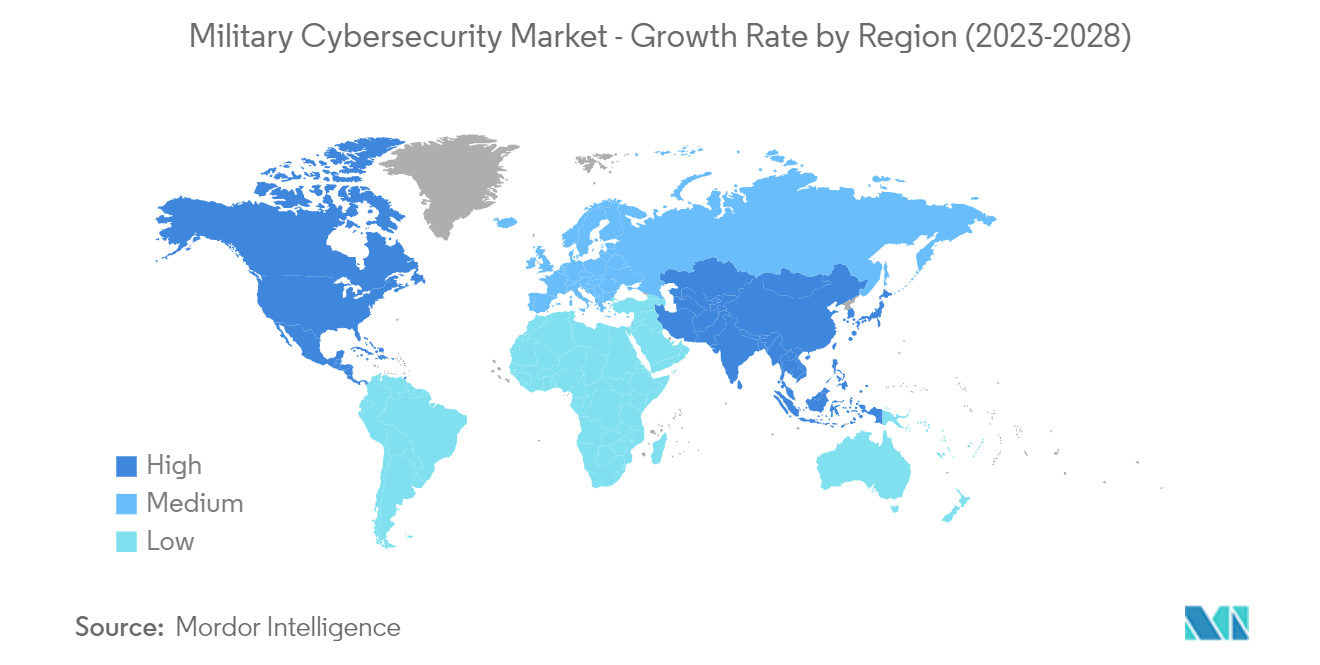Market Trends of Military Cybersecurity Industry
The Threat Intelligence and Response Segment is Anticipated to Grow with the Highest CAGR During the Forecast Period
The threat, intelligence, and response segment are expected to show significant growth during the forecast period. The need for the detection of advanced cybersecurity threats coupled with the growth in quick response times to handle such cyber threats will be the major factors leading to the growth of the segment in the coming years. Moreover, the increase in the number of defense expenditures by various countries has led to an increase in spending concerning cybersecurity in recent times.
Threat intelligence, also known as cyber threat intelligence (CTI), is the information that is gathered from a range of sources about current or potential attacks against an organization. The information is analyzed, refined, and organized and then used to minimize and mitigate cybersecurity risks. The main purpose of threat intelligence is to show organizations the various risks they face from external threats, such as zero-day threats and advanced persistent threats (APTs). In terms of military cyber security, threat intelligence includes in-depth information and context about specific threats, such as who is attacking, their capabilities and motivation, and the indicators of compromise (IOCs). Moreover, the segment also includes information related to protecting an organization from external and inside threats, as well as the processes, policies, and tools used to gather and analyze that information.
Key players in the market such as Accenture as well as Thales Group are currently engaged in the development of various software which can help defense personnel worldwide to collect, analyze and then sort all of the data related to a cyber-attack which will lead to a positive outlook shortly and will lead to the growth of the market.

North America Will Showcase Remarkable Growth During the Forecast Period
North America is projected to show the highest growth during the forecast period. The growing defense budget coupled with the increasing need to improve the defensive capabilities in order to prevent cyber attacks will be the main reasons which will lead the market growth in the near future.
According to the data presented by Stockholm International Peace Research Institute (SIPRI), defense spending by the United States accounted for nearly 40 percent of military expenditures by countries around the world in 2022. According to the SIPRI data, the United States defense spending increased by USD 71 billion from 2021 to 2022, in part due to military aid sent to support Ukraine in its ongoing conflict. Furthermore, in March 2023, the Biden-Harris Administration submitted to Congress a proposed Fiscal Year (FY) 2024 Budget request of USD 842 billion for the Department of Defense (DoD), an increase of USD 26 billion over FY 2023 levels and USD 100 billion more than FY 2022.
Cybersecurity is now at the forefront of policy discussions and planning for future conflicts. In many ways, the cyber threat has leveled the playing field, and that presents unique concerns to the United States. According to the report prepared by the Defense Science Board (DSB) Task Force on Cyber Deterrence, the cyber capabilities of other nations exceed the ability of the United States to defend systems and also that this trend will continue for the next few years. According to the Department of Defense, the United States needs to better address the human side of the cyber security problem, including the frequent security breaches that take place today. Eliminating compliance reports or using technology to automate compliance reports to give people time to patch security vulnerabilities and fix the network will be beneficial in the long run.
In response to the growing cyber threats, the United States Cyber Command has taken a comprehensive and proactive approach hat involves being able to defend forward anywhere in the world, in order to respond to cyber and other threats before they reach the homeland. The Department of Homeland Security (DHS) is responsible for helping Federal Executive Branch civilian departments and agencies secure their unclassified networks (.gov). DHS also works with owners and operators of critical infrastructure and key resources (CIKR). In addition, The US Department of Justice is announcing criminal charges against four MSS hackers addressing activities concerning a multiyear campaign targeting foreign governments and entities in key sectors, including maritime, aviation, defense, education, and healthcare.
The growing need for the United States military to secure their communication channels as well as prevent the leakage of sensitive defense information coupled with the high need to stop cybersecurity attacks before they reach the homeland has led to the United States implementing several policies and investments which shall have a positive outlook in the market in the years to come and also lead to the market growth.


